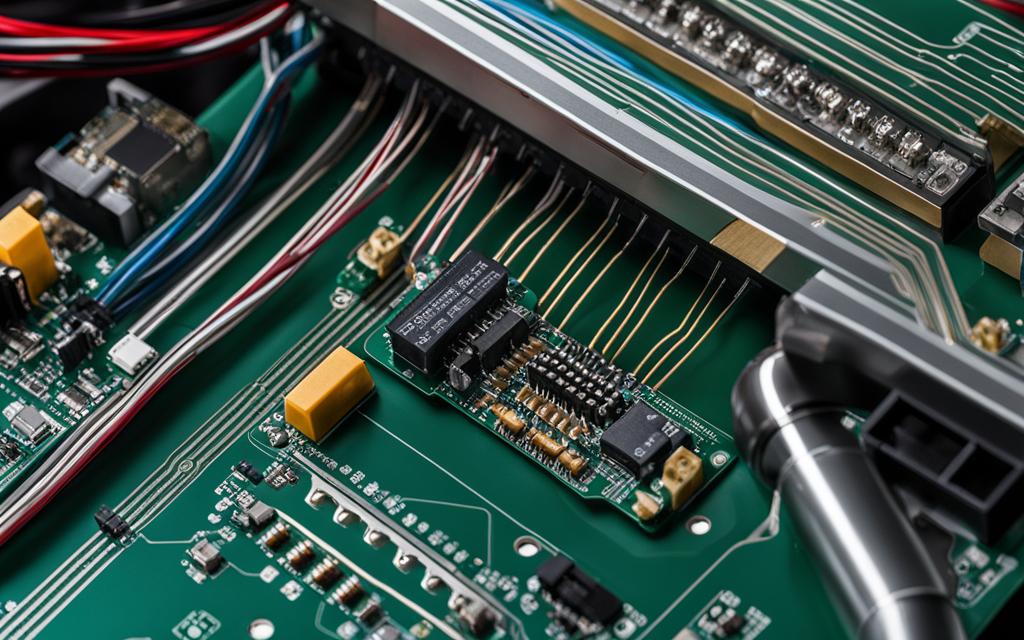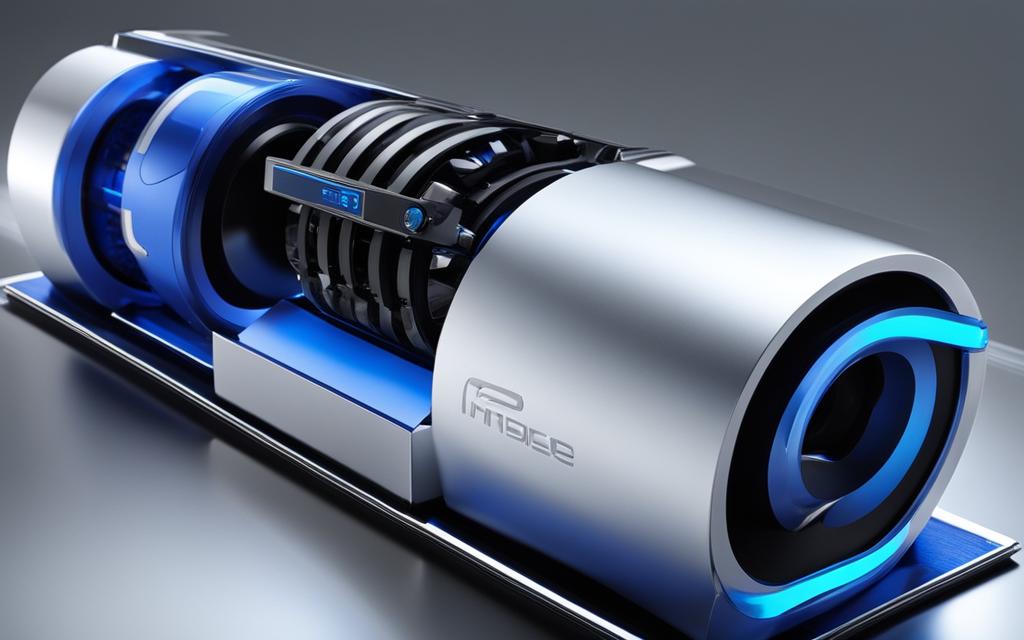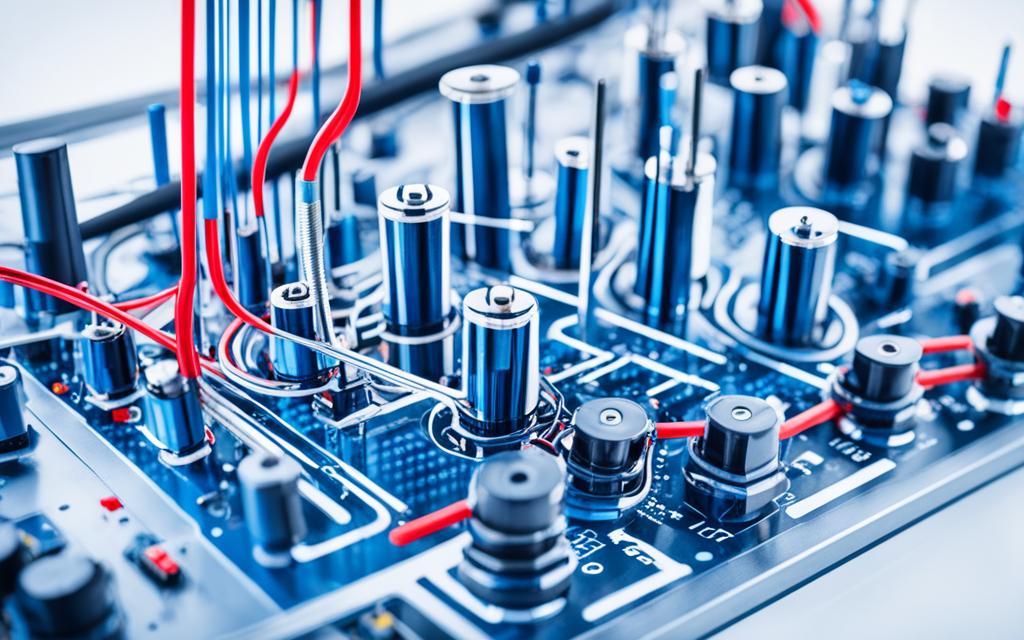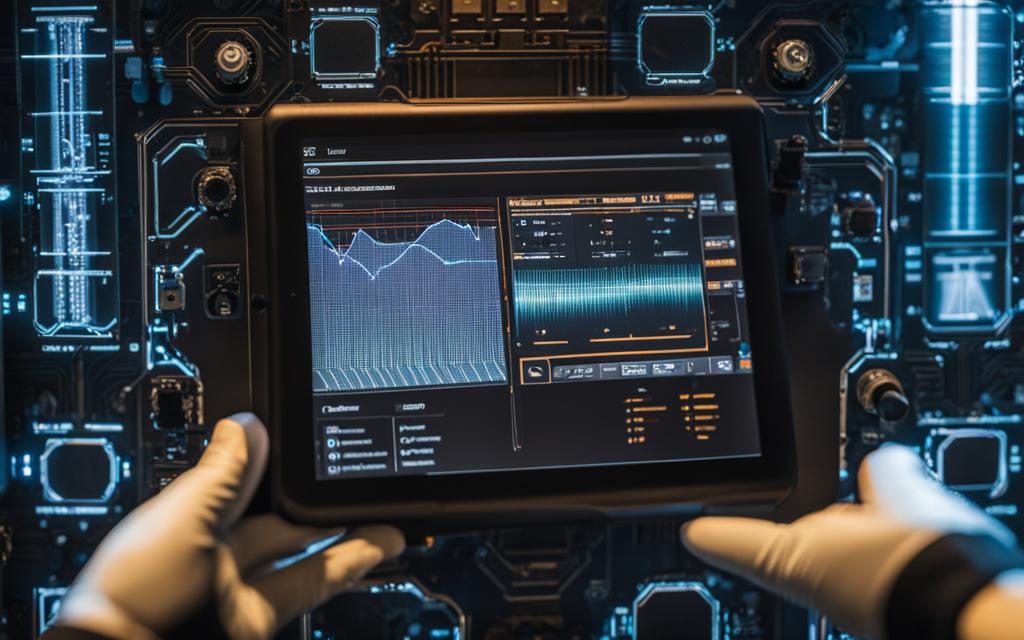
Sensorless Control In Precision Motion Applications
In the realm of precision motion, ensuring efficient and reliable performance while reducing costs is a paramount challenge that industries continually face.
Striking a balance between sophisticated functionality and economic efficiency has led to the pioneering of sensorless vector control; a technology that has revolutionized electric motor management.
Sensorless control operates by utilizing complex algorithms to derive necessary feedback for motion applications, such as speed or position, directly from the electrical inputs of voltage and current, without reliance on physical sensors.
The application of this innovative technology aligns with the growing computational capabilities and advancements in control theory, allowing for an unmatched operational proficiency.
The absence of sensor mechanisms streamlines system architecture, improves robustness by removing points of potential failure, and promotes cost reduction in both installation and maintenance.
As industries move to adopt these sophistications, the enhanced reliability offered by sensorless technologies has become a cornerstone for various applications, from the vehicle industry to the development of smart machinery.
This progress marks a significant leap in how automation and efficiency are approached within complex industrial systems.
Key Takeaways
- Sensorless technology ensures reliable motor control without physical sensors.
- The shift to sensorless solutions promotes significant cost reduction.
- Industry adoption of sensorless vector control is rising due to enhanced system robustness.
- Advancements in algorithms have led to improved performance in electric motor management.
- Sensorless control aligns with the need for precision motion in varied applications.
- Eliminating sensors mitigates the risk of component failure and environmental disturbance.
Exploring The Emergence of Sensorless Technology In Modern Industries
As the industrial landscape continues to transform, the shift from sensored to sensorless systems has become a pivotal milestone in technological progression.
The evolution is driven by the quest for system optimization, where minimizing costs, enhancing reliability, and simplifying complexities rank high on the priority list for modern industries.
Sensorless innovations are making stark impacts, redefining industry standards and encouraging a new wave of modern industrial applications that align with the dynamism of the current market demands.
The Integral Role Of Sensorless Control In Motor Drives
The surge of sensorless control technology in motor drive applications heralds a transformative era in electric motor management.
By forgoing the traditional reliance on physical feedback systems, industries are increasingly leveraging the advantages of sensorless AC servo motors and other electric motor drives to achieve unrivaled performance and efficiency.
The Evolution From Sensored To Sensorless Systems
Traditional sensored mechanisms have given way to sensorless innovations as industries recognize the inherent benefits of these systems.
The transformation is characterized by the removal of physical sensors and the implementation of advanced algorithms capable of accurately estimating system parameters—practices that are becoming benchmarks in industry advancements.
Assessing The Impact On Industry Standards And Protocols
The transition to sensorless technology signals a significant reevaluation of existing industry standards and protocols.
The incorporation of sensorless capabilities into standards is not only a testament to the technology’s robustness but also underscores the growing necessity for systems that can maintain performance under a variety of conditions without the constraints of traditional sensors.
Sensorless Innovations Across Various Sectors
- Electric motor drives in vehicles, benefiting from increased efficiency and reduced weight
- Smart manufacturing processes, which capitalize on greater reliability and lower maintenance requirements
- Medical device operations, where precision and resistance to environmental factors are critical
Unraveling Sensorless Techniques In Electric Motor Management
Groundbreaking sensorless strategies harness the power of computing to extract motor data crucial for dynamic motor control.
These techniques, adept at managing both induction motors and permanent magnet synchronous motors (PMSMs), incorporate sophisticated models that use observable voltages and currents to infer rotor position and speed.
Notable methods like back-EMF estimation, which utilizes the motor’s inherent electrical properties, along with slip speed detection and high-frequency signal injection, are pivotal in simplifying the feedback loop, ensuring real-time motor control without physical sensors.
Back-EMF estimation, in particular, relies on the electromotive force generated as motors spin, enabling sensorless drives to assess the velocity of the rotor. High-frequency signal injection methods serve to resolve one of the most significant challenges in motor control: operating in low-speed ranges where back-EMF signals are typically weaker.
These advancements have gradually set the stage for sensorless electric motor drives to become a mainstay in applications where precision, dependability, and reduced physical complexity are of utmost importance.

Comparative Analysis: Sensorless vs. Sensored Feedback Systems
A side-by-side comparison of sensorless configurations and traditional sensored feedback systems suggests a dynamic shift in preference towards the former.
While sensors can provide direct and potentially higher precision measurements of parameters like speed and position, sensorless technology offers a slate of compelling advantages—the removal of sensors not only streamlines the motor drive design but also eliminates potential failure points as associated with external hardware.
Benefits of sensorless controls go beyond just the simplification of electrical installation; they extend to lower manufacturing costs and enhanced system reliability, especially in harsh or inaccessible environments where sensor longevity is compromised.
Given these benefits, industries are inclined to adopt sensorless solutions for motor control, where they can experience a noteworthy impact on the life-cycle cost and overall performance of their electric motor systems.
- Reduced hardware requirements lead to simpler and more compact motor designs.
- Decreased exposure to mechanical wear and environmental factors extends motor drive lifespan.
- Cost efficiencies from foregoing additional sensor components are infrastructurally significant.
Sensorless motor control technology, bolstered by these methods and benefits, affirms its growing prevalence in the world of electric motor drives and is poised to define the next generation of feedback systems.
Implementing Sensorless Control Strategies
The relentless pursuit of efficient motion control in the automation industry has culminated in the innovative use of sensorless servo technology.
A departure from traditional mechanisms, this state-of-the-art approach has dramatically influenced AC motor optimization, paving the way for more nimble and resilient systems.
Maximizing Efficiency And Precision
By sidestepping the need for mechanical sensors, these sophisticated strategies ensure enhanced performance of motors.
Foremost among these is the adoption of Direct Torque Control (DTC), a method that directly influences the torque and flux of the motor, streamlining the control process.
Additionally, the implementation of state observers, notably the Kalman Filter, offers dynamic estimation of the motor states, further contributing to the system’s efficiency.
These sensorless methodologies not only bolster precision but are also pivotal in reducing operational costs and improving system robustness.
Challenges Of Integrating Sensorless Control In Servo Motor Design
Transitioning to sensorless control systems is not without its challenges.
One of the primary obstacles lies in the intrinsic complexity of the control algorithms required.
To address this, considerable emphasis is placed on the refinement of algorithm design and the enhancements in computational models.
Moreover, the accuracy of motor parameters becomes increasingly critical, as any discrepancy can affect the overall performance of the motor.
Engineers and designers are thus tasked with a meticulous calibration of these parameters to ensure seamless integration and optimal functioning of sensorless control.
- Enhanced system robustness and cost-efficiency with sensorless strategies
- Importance of Direct Torque Control and state observers like the Kalman Filter
- Need for sophisticated control algorithms and precise motor parameters
Sensorless Control: Advancements In Renewable Energy Systems
The renewable energy sector is undergoing a transformative shift with the integration of sensorless control technologies.
As the demand for clean energy surges, the need for optimization and cost-effectiveness in renewable energy systems becomes increasingly crucial.
Sensorless wind turbines are at the forefront of this innovation, harnessing wind power more efficiently by eliminating the need for mechanical sensors to determine rotor speed and position.
Photovoltaic systems are not left behind in this technological advancement.
By implementing sensorless Maximum Power Point Tracking (MPPT) techniques, these systems maximize the capture of solar energy.
MPPT’s sensorless approach fine-tunes the photovoltaic system’s operation to adapt to changing sunlight conditions without the need for manual intervention, ensuring consistent energy optimization.
Together, these emerging sensorless applications bolster the pillars of renewable energy optimization, with their ability to enhance system reliability while minimizing additional costs associated with physical sensors.
This section examines the role of sensorless technology in renewable energy and its implications for the future of sustainable power generation.
“Harnessing earth’s renewable sources more effectively is imperative for environmental sustainability. Sensorless control technology’s role in renewable energy optimization is a giant leap towards realizing this goal.” – Energy Expert
- Rising prominence of sensorless wind turbines in capturing wind energy efficiently.
- Advantages of sensorless MPPT in solar energy conversion.
- Contributions of sensorless technology to sustainable energy practices.
These pivotal developments in sensorless control methods not only contribute to a more resilient renewable energy infrastructure but also pave the way for advancements yet to come in sustainable energy technologies.

In essence, sensorless control stands out as a keystone technological evolution that continues to empower the renewable energy industry, propelling it towards a future defined by both environmental stewardship and economic viability.
Highlighting Cost-Effective Solutions In Price-Sensitive Applications
The dawn of sensorless technology has brought forth a paradigm shift in industrial and consumer markets, with a singular focus on achieving cost reduction without sacrificing performance.
Acknowledging this shift is essential for understanding how companies can sustain profitability while catering to the increasingly price-sensitive nature of these sectors.
Surveying The Economic Benefits Of Adopting Sensorless Motors
When examining the economic benefits of sensorless motor applications, the savings become apparent.
The absence of conventional sensors means there’s a significant reduction in manufacturing parts, which translates into direct material cost savings.
Additionally, removing physical sensors simplifies the manufacturing process, reducing labor hours and potential points of failure, resulting in a more robust and cost-effective sensorless solution.
Application-Specific Advantages In Consumer And Industrial Markets
Consumer and industrial products alike reap the advantages of sensorless designs, particularly where budget constraints drive demand.
In applications ranging from household appliances to industrial machinery, eliminating the need for sensors not only cuts down on initial costs but also reduces the maintenance expenses over the lifecycle of the product.
Whether it’s enhancing the durability of a commercial drill or improving the reliability of ventilation systems, sensorless motors present a valuable proposition for price-sensitive industrial applications, underpinning their growing adoption in the market.
Effects Of Harsh Environmental Conditions On Sensing Equipment
Sensing systems are crucial components across a range of industries, playing a pivotal role in monitoring and managing electronic processes.
However, these systems are often deployed in scenarios where they face adverse operating conditions that can severely impact their performance and longevity.
For instance, extreme temperatures can degrade sensor functionality, while mechanical stresses such as vibrations and shocks can lead to premature wear and tear.
Moreover, corrosive chemicals present in industrial environments can compromise sensor durability, leading to equipment failures and costly maintenance.

The advent of sensorless control technology has revolutionized the landscape, providing a highly reliable alternative to conventional sensor-reliant systems.
These sensorless designs sidestep the pitfalls associated with direct environmental exposure.
As a result, they offer an additional layer of resilience to industrial equipment forced to operate under challenging conditions.
This not only extends the life span of the devices but also reduces maintenance needs and associated costs.
By harnessing the power of sensorless technology, industries can ensure continuous operation without the interruptions caused by sensor failures in harsh environments.
- Elimination of fragile components exposed to harm
- Mitigation of failure risks from environmental factors
- Reduction in downtime and maintenance
- Enhanced overall system robustness and reliability
Given the striking benefits of sensorless control systems, industries are increasingly adopting these solutions to avoid the challenges posed by difficult operational scenarios.
The implications of this shift are far-reaching, marking a significant step towards automation that can withstand the rigorous demands of modern industrial environments.
Precision Motion Control: The Pivotal Transition To Sensorless Methods
The relentless pursuit of innovation within the realms of robotics, drones, and automated systems has led to a strategic shift towards sensorless technologies.
This progression prioritizes automated systems efficiency and lays the groundwork for substantial enhancements in operational precision.
By leveraging the innate capabilities of sensorless control, these sophisticated applications encounter a redefined standard for precision motion control, setting a new benchmark for the industry.
The Impact On Robotics, Drones, And Automated Systems
In the detailed orchestration of sensorless robotics, the innate complexity of intricate movements is mastered with formidable accuracy.
Drones, rising to prominence in numerous commercial and surveillance applications, capitalize on sensorless controls to navigate with unprecedented reliability.
The realm of automation has welcomed this technological stride as a means to champion efficiency, ensuring that production lines and mechanical processes benefit from a fluidity previously unattainable.
Comparing Sensorless With Traditional Precision Motion Techniques
When juxtaposed with traditional precision motion methodologies, the merits of sensorless approaches become strikingly evident.
Without the encumbrances of gearheads and encoders, systems embrace a newfound resilience against environmental adversities, nudging traditional control techniques into obsolescence.
This comparison unfolds a narrative of cost-saving benefits and reliability that sensorless innovations underscore, heralding a palpable preference within advanced technology sectors for this progressive motion control paradigm.
Overcoming Obstacles In Low-Speed And Startup Conditions
The quest for unparalleled accuracy in motor control often hits a speed bump when it comes to navigating the realm of low-speed operation and sensorless startup.
These particular scenarios unveil the motion control challenges where conventional sensor methodologies falter, and the ingenuity of sensorless alternatives is put to the test.
Alternative Strategies For Handling Initial Motion Challenges
Traditional sensor-based systems depend heavily on back-EMF signals that vanish into near obscurity at low speeds.
To combat this, cutting-edge sensorless startup strategies leverage an array of inventive tactics.
One such strategy, high-frequency signal injection, thrusts a navigational lifeline to motors at standstill or slow velocities, facilitating a reliable commencement of motion without the need for direct sensory feedback.
Similarly, sophisticated model-based estimation techniques are employed, harnessing the processing prowess of modern controllers to predict and adapt to the motor’s parameters, thereby ensuring a synchronized and stable startup.
Technological Breakthroughs In Low-Speed Sensorless Implementations
Pioneering advancements in technology are reshaping the sensorless control landscape, particularly during those critical moments of initial inertia.
The formidable combination of enhanced computational capabilities and progressive algorithmic design is extending the frontiers of what’s feasible in low-speed scenarios.
By embracing these innovations, sensorless control systems now exhibit a prowess that was previously thought unattainable, ensuring that dependable motion control is maintained even at the lower echelons of the speed spectrum.

From the reinforced engines of industrial automation to the delicate surgical arms in medical robotics, the relevance of these sensorless startup strategies cannot be overstated.
The ongoing research and development in this field promise not only to refine these systems but also to herald a new age where seamless low-speed operation becomes a benchmark standard within motion control technologies.
Future Trajectories: The Role Of AI In Sensorless Precision Motion
The intersection of artificial intelligence and sensorless control technologies marks a significant milestone in motion control systems.
As AI continues to advance, it promises to inject unprecedented adaptability and prediction into sensorless applications, thereby refining their functionality and efficacy.
Notably, it stands to deliver dynamic improvements where traditional programming constraints once limited system performance.
Existing methodologies within sensorless mechanisms can often be rigid and may fall short when facing variable conditions or unpredictable scenarios.
AI excels by introducing learning capabilities where systems can evolve through interaction with their environment.
This evolution in sensorless control advancements augments the ability to process and react to real-time data without the need for manual recalibration, signaling a shift towards more autonomous and intelligent technology frameworks.
The integration of AI with sensorless controls is poised to redefine standards in motion control, creating a pathway to more nuanced and efficient operation.
- Predictive maintenance models that preemptively detect and address potential system failures before they occur
- Advanced algorithmic solutions that enhance the precision of sensorless systems under a broader range of conditions
- Energy optimization protocols that drastically reduce the power consumption of motion control systems
Such advancements pave the way for what might be considered the next horizon of future motion control technologies.
By harnessing the capabilities provided by AI, industries can expect to see a surge in the deployment of sensorless systems that are not only more reliable and cost-effective but also intelligent and nuanced in their operations.
Assessment Of Sensorless Control Reliability And Maintenance Benefits

The burgeoning shift toward sensorless control technology has been a boon for industries aiming at skyrocketing their operational efficiency.
Without the hiccups of regular service checks marred by the presence of conventional sensors, these advanced mechanisms pave the way for stellar performance over an extended lifespan.
A comprehensive reliability assessment of these systems sheds light on the seamless integration and dependability that characterize sensorless control options in today’s market.
Evaluating Longevity And Durability In Sensorless Mechanisms
Longevity and durability stand as the pillars of sensorless system appeal.
The absence of mechanical wear points found in their sensor-laden counterparts greatly diminishes the likelihood of system failures.
This resilience against breakdowns translates into sensorless system longevity, ensuring that vital operations persist unhindered, benefiting sectors where consistency is key.
Minimal Maintenance Benefits: Reducing Long-Term Operational Costs
The economical contours of sensorless controls are not only limited to their initial setup.
With fewer moving parts and diminished needs for intervention, organizations have heralded the maintenance benefits.
These systems bypass the drain on resources typically involved in sensor maintenance, offering a tantalizing reduction in both downtime and long-term operational costs—a compelling argument for those aiming for an enduring uptick in productivity.
- Increased up-time due to fewer mechanical failures
- Decrease in lifetime cost of ownership as a result of limited maintenance needs
- Potential for more compact machine designs due to lack of external sensing elements
Through the lens of reliability assessments, the long-term economic and operational bonuses of sensorless technology are crystal-clear.
Industries today are approaching a pivotal juncture where the traditional challenges with system maintenance and durability are addressed head-on, with sensorless solutions emerging as the frontrunner in this transformative era.
In the quest for advancing precision motion control, sensorless technology has emerged as a transformational force within the industrial sphere.
This synthesis of expert insights has uncovered the pivotal role that sensorless control plays in propelling industrial innovation forward.
By simplifying system designs, reducing costs, and bolstering operational sturdiness, sensorless systems are setting new standards for efficiency and performance in various applications.
Synthesizing Key Insights On Sensorless Control In Precision Motion
The collective examination of the efficacy and applications of sensorless control reveals its substantial impact on enhancing precision motion.
From motor drives to renewable energy systems, the shift towards sensorless technologies is being driven by their ability to provide exacting control without the inherent vulnerabilities of sensored systems.
As control algorithms grow more sophisticated, and computational capacity expands, the feasibility and desirability of sensorless approaches continue to flourish, marking a notable shift in the industry’s approach to motion management.
Envisioning The Future Landscape Of Sensorless Technology In Industry
Looking towards the horizon, the industry anticipates a seamless integration of sensorless systems with artificial intelligence, potentially leading to a revolution in future sensorless applications.
This technological synthesis envisages a scenario where intelligent algorithms not only optimize performance but also preemptively manage system health, paving the way for self-regulating industrial mechanisms.
As these developments unfold, sensorless control stands as a formidable benchmark for modern motion control innovation, promising to significantly influence the future direction of industrial applications.
